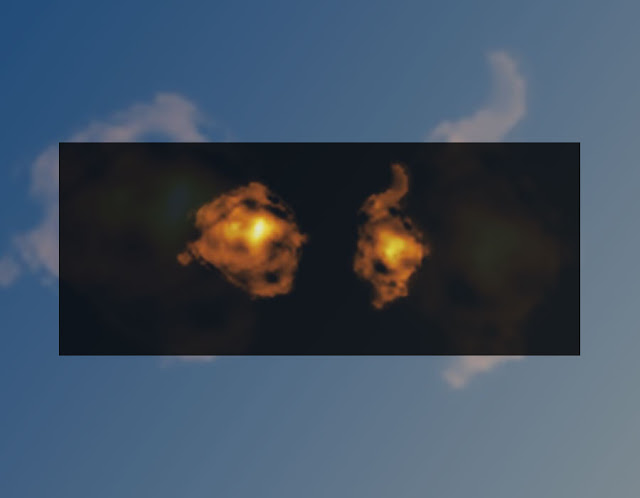Astronomers witness a rare "cosmic joust" as two galaxies 11 billion light-years away collide, with a quasar halting star formation in a galactic battle.
 |
| Galactic collision 11 billion light-years away reveals a quasar’s radiation halting star birth in a rare cosmic joust, confirming long-held astronomical theories. Image: CH |
SANTIAGO, Chile — May 24, 2025:
In a groundbreaking astronomical observation, scientists have recorded a spectacular "cosmic joust" between two galaxies merging 11 billion light-years from Earth—a first-of-its-kind event revealing how galactic collisions can halt star formation through intense radiation from a quasar.
Using Chile’s powerful Atacama Large Millimeter/submillimeter Array (ALMA) and the Very Large Telescope (VLT), researchers tracked two galaxies speeding toward each other at over 1.1 million mph. One of the galaxies, home to a blazing quasar—an active supermassive black hole surrounded by a glowing accretion disk—unleashed ultraviolet radiation so strong it disrupted the star-forming activity of its partner.
“That’s why we call it a ‘cosmic joust,’” said lead researcher Pasquier Noterdaeme of the Paris Institute of Astrophysics and the French-Chilean Laboratory for Astronomy. “The quasar’s blast is interfering with star formation in the neighboring galaxy—this is the first time we’ve directly seen such a radiative effect.”
The quasar's energy, emitting ultraviolet radiation thousands of times stronger than what exists in the Milky Way, prevented hydrogen molecules in the nearby galaxy from condensing into stars. Star birth typically begins when dense gas clouds collapse under their own gravity, a process now halted by the incoming radiation.
“It’s really the first time we can observe this interaction in real time,” said co-author Sergei Balashev of the Ioffe Institute in Russia. “This phenomenon has been theorized for years but never captured with such clarity.”
Initially, the quasar drew scientific attention due to its unusual low-resolution spectral signature—a clue that prompted further investigation. Using advanced imaging techniques, astronomers were able to separate the blinding light of the quasar from surrounding space, revealing the presence of two galaxies thousands of light-years apart yet gravitationally entwined.
“At first, we just saw molecular gas between us and the quasar,” said Noterdaeme. “But with bigger telescopes, it became clear there were two galaxies, not one.”
Though it's uncertain whether the galaxies have fully merged—due to the immense timescale required for light to reach Earth—this celestial skirmish offers a rare window into the "noon of the universe," a period around 3 billion years after the Big Bang marked by rapid star formation and galactic evolution.
Dong-Woo Kim of the Harvard-Smithsonian Center for Astrophysics, unaffiliated with the study, called the discovery “a stunning step forward in understanding galaxy birth and evolution.”
As the universe continues to evolve, scientists say even the Milky Way is expected to collide with the Andromeda galaxy in the distant future—an epic cosmic event that may resemble this newly discovered galactic joust.